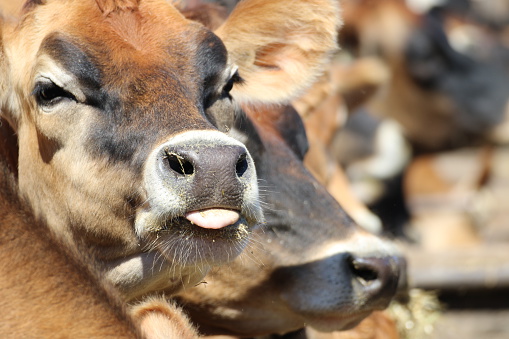 According to a new report released by the American Academy of Pediatrics (AAP), the excessive use of certain antibiotics in livestock is having an adverse effect on doctors’ abilities to effectively treat life-threatening infections among young patients.
According to a new report released by the American Academy of Pediatrics (AAP), the excessive use of certain antibiotics in livestock is having an adverse effect on doctors’ abilities to effectively treat life-threatening infections among young patients.
Antimicrobial agents are commonly fed to otherwise healthy livestock in the U.S. as a means of promoting growth, improving feed efficiency, or preventing the spread of diseases among animals. The AAP report, which was published online yesterday in the journal Pediatrics, suggests that about 60% of antimicrobial agents that are used for livestock are also sometimes used in the realm of medicine to treat humans.
As a result, the use of these antimicrobials in cultivating livestock is contributing to an increasing number of people becoming resistant to antimicrobial drugs in the U.S. Resistant bacterial pathogens can be transferred to humans through exposure from food sources, directly from infected animals, or cross-contaminated vegetables and fruits. It’s estimated that as many as two million Americans, including children under the age of five, get sick with an antimicrobial-resistant infection every year. Doctors are often unable to properly treat them with the appropriate antibiotic because the patients’ bodies have already become immune to it.
“Children can be exposed to multiple-drug resistant bacteria, which are extremely difficult to treat if they cause an infection, through contact with animals given antibiotics and through consuming the meat of those animals,” explained Jerome A. Paulson, MD, lead author of the report.
Paulson’s recommendation is to treat the administering of antibiotics to livestock the same way that we do for humans—only when it’s needed. Rather than the current practice of indiscriminately using antibiotics, livestock should receive the appropriate antibiotic agents for infections only, with a legitimate prescription and under the supervision of a qualified veterinarian. The hope is that this will help to reduce the rates of antimicrobial resistance seen particularly among children, and therefore improve the efficiency of medicinal treatments when they’re needed.
This report is in line with another recent report published last month in The Lancet, which found that a 30% rise in antibiotic resistance could lead to over 6,300 fatalities a year across the U.S. Although this study focused on the misuse of common antibiotics (e.g. prescribing them for non-bacterial infections, offering over-the-counter antibiotics, etc.), it sheds light on the same issue—reducing the occurrence of antibiotic resistance can ultimately improve the treatment of bacterial infections and therefore increase recovery (and survival) rates.
Sources for Today’s Article:
Paulson, J.A., et al., “Nontherapeutic Use of Antimicrobial Agents in Animal Agriculture: Implications for Pediatrics,” Pediatrics, 2015; 136(6); doi: 10.1542/peds.2015-3630.
“AAP Highlights Danger to Kids From Antibiotics Use in Food Producing Animals,” American Academy of Pediatrics web site, November 16, 2015; https://www.aap.org/en-us/about-the-aap/aap-press-room/Pages/AAP-Highlights-Danger-to-Kids-From-Antibiotics-Use-in-Food-Producing-Animals.aspx.
“Fears grow over increased antibiotic resistance,” BBC web site, October 16, 2015; http://www.bbc.com/news/health-34541253.
